Buying a Pikler Triangle is an exciting milestone for every family with a young child. It’s one of the most worthwhile investments when it comes to active play and motor development. That’s why it’s important to be well-informed before choosing the right model for your home. In this article, we’ll guide you through the key factors to consider before purchasing this beloved Montessori climbing frame.
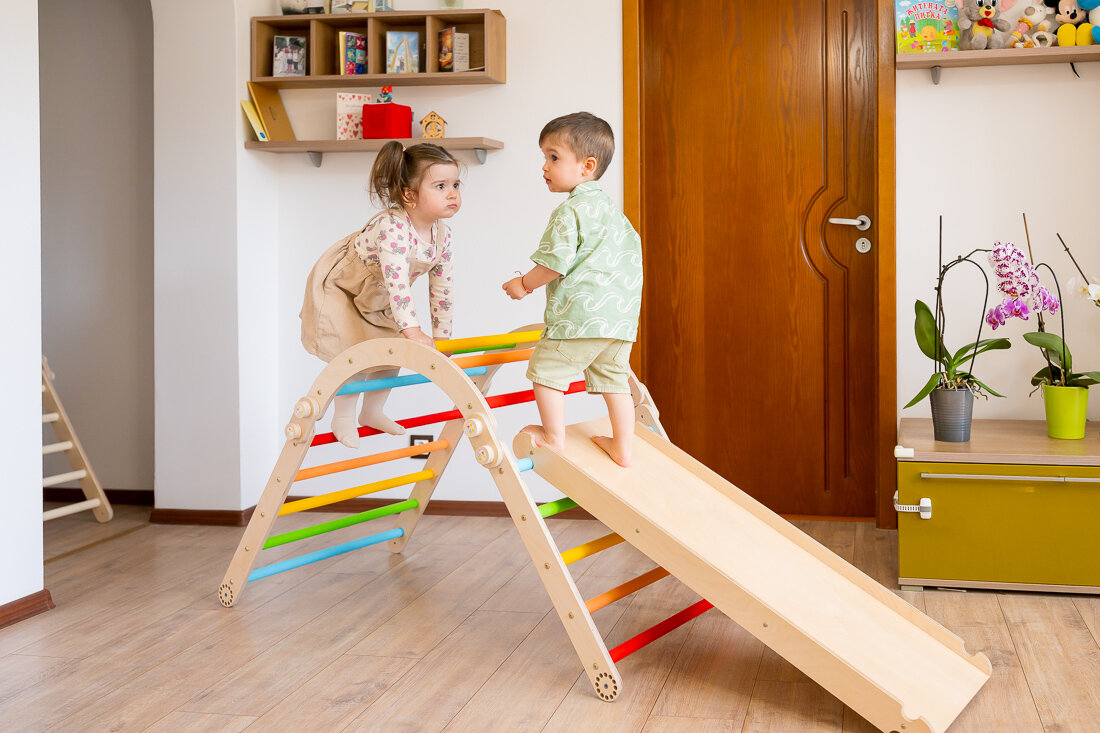
What Is a Pikler Triangle?
The original Pikler Triangle was designed over 100 years ago by Hungarian pediatrician Dr Emmi Pikler. It’s a simple wooden climbing structure shaped like a triangle that encourages children to explore, climb, and move freely.
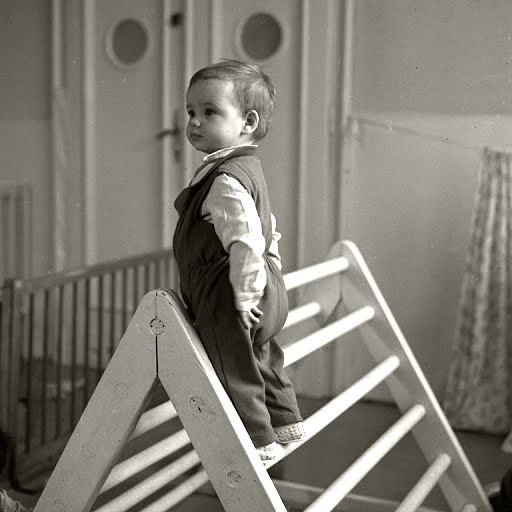
Over the years, the design has evolved to suit modern homes, and today you can find versions that are foldable, adjustable, and even expandable to grow with your child.
Most Pikler Triangles are suitable for children from around 6 months up to 5 years old. The beauty of this toy is that it allows children to explore their abilities at their own pace. Babies begin by crawling under the triangle, then gradually pull themselves up, and later climb over to the other side as their confidence grows.
Types of Pikler Triangles
While the first version was a simple fixed wooden frame that couldn’t be adjusted or folded, newer designs make it more compact and versatile. The two most popular options today are the adjustable (modular) Pikler Triangle and the foldable Pikler Triangle.

Adjustable (Modular) Pikler Triangle
The adjustable model, also known as the transforming or modular Pikler Triangle, consists of separate climbing modules that can be connected together with bolts and wooden grips to form a triangle.
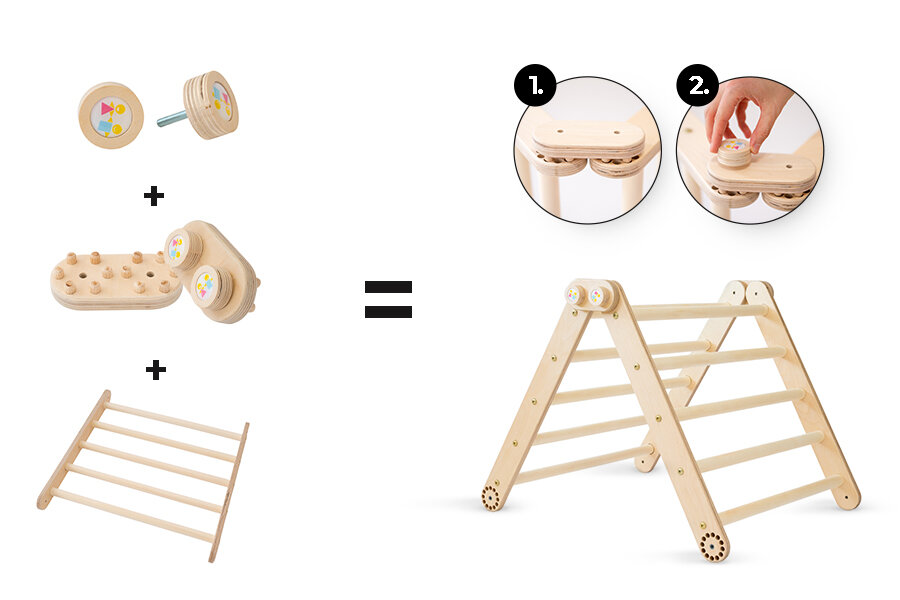
You can set the modules at different angles depending on your child’s age and abilities. For younger children, the frame can be assembled at a wider angle for a lower height, and for older children, it can be made steeper for a greater climbing challenge.

One of its biggest advantages is that it grows with your child. When a two-module triangle becomes too small, you can easily add extra modules to create larger structures like a house, letter shapes, or any design your child’s imagination comes up with.
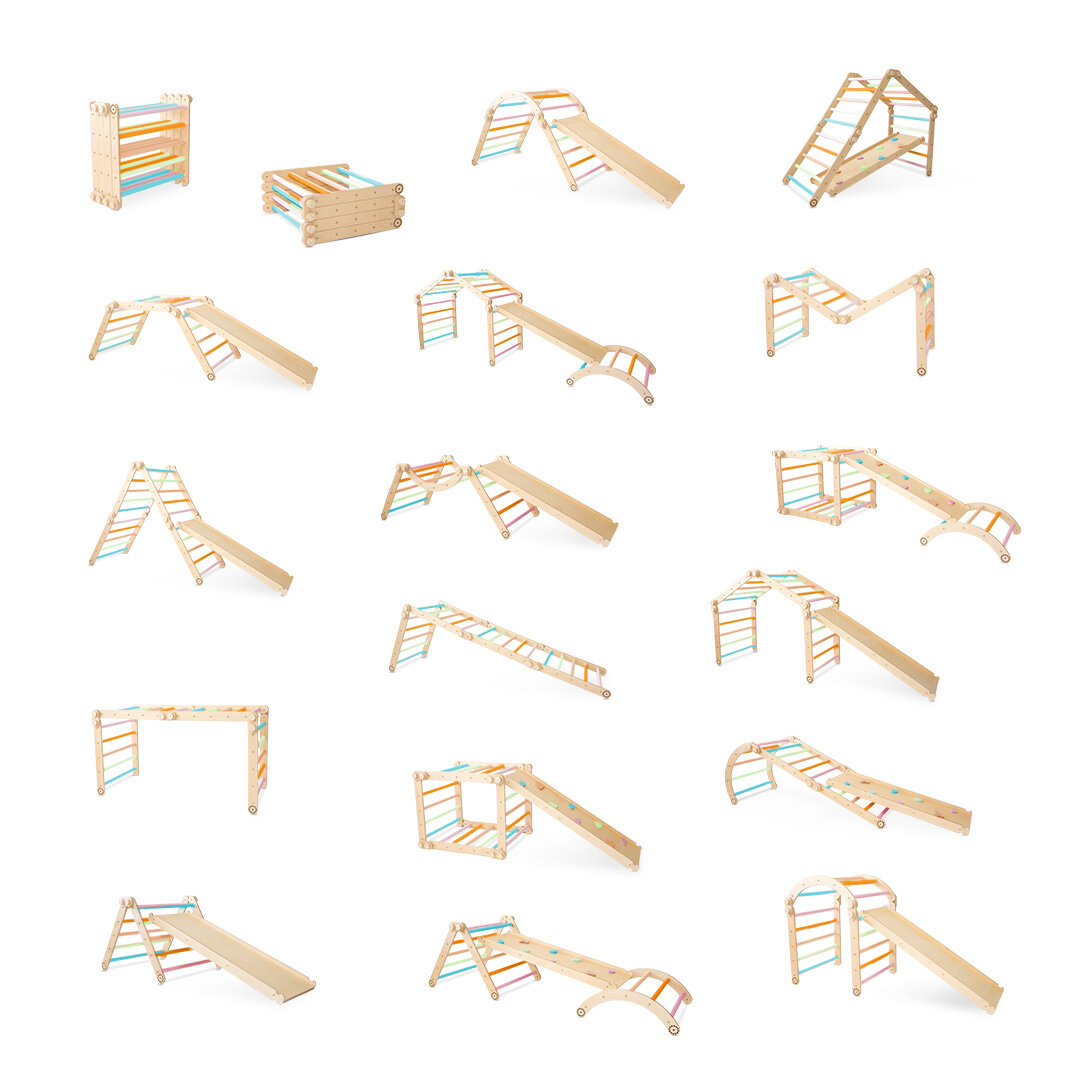
Besides being multifunctional, it’s also highly space-saving. When disassembled, the modules take up very little room.
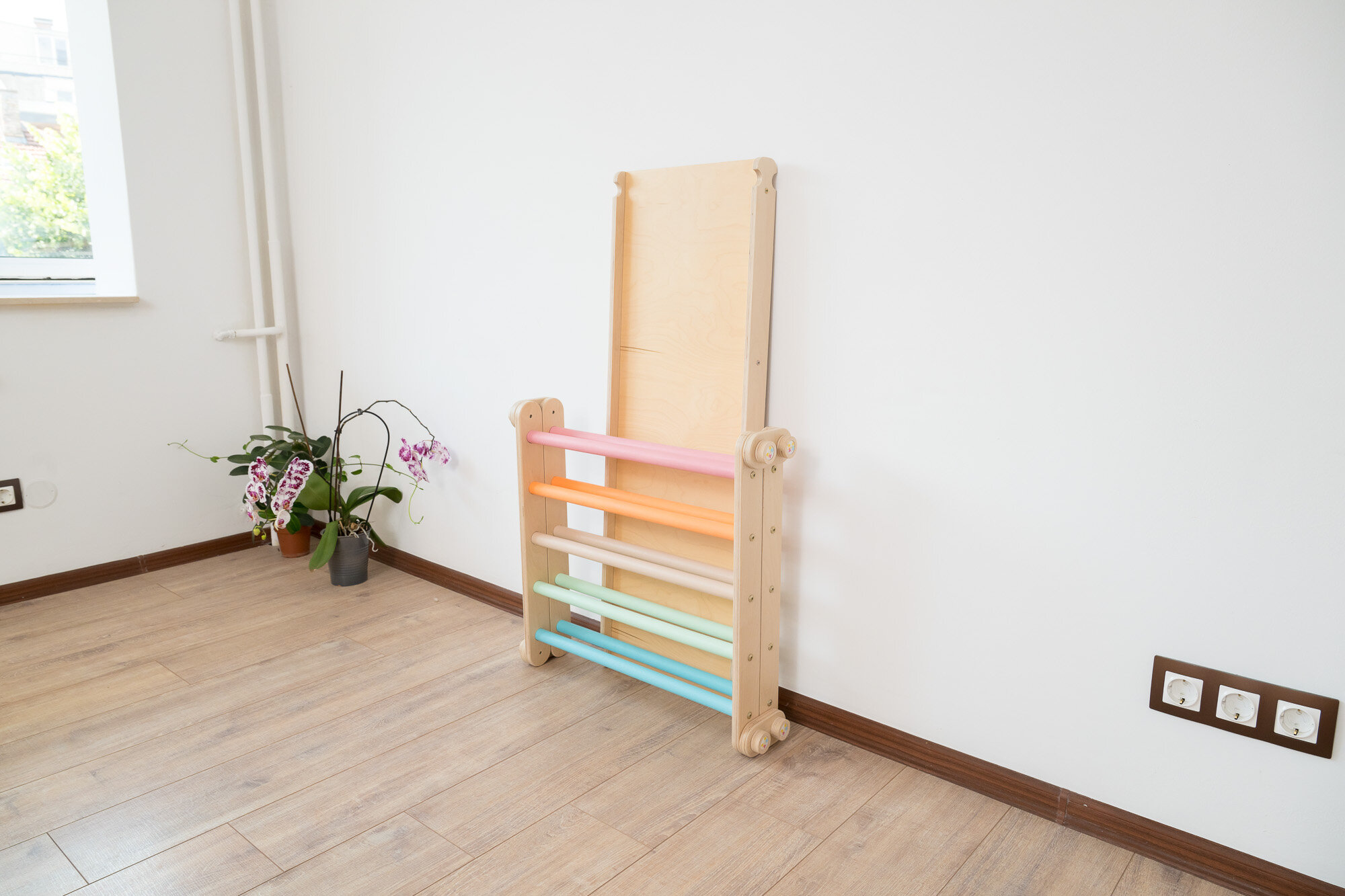
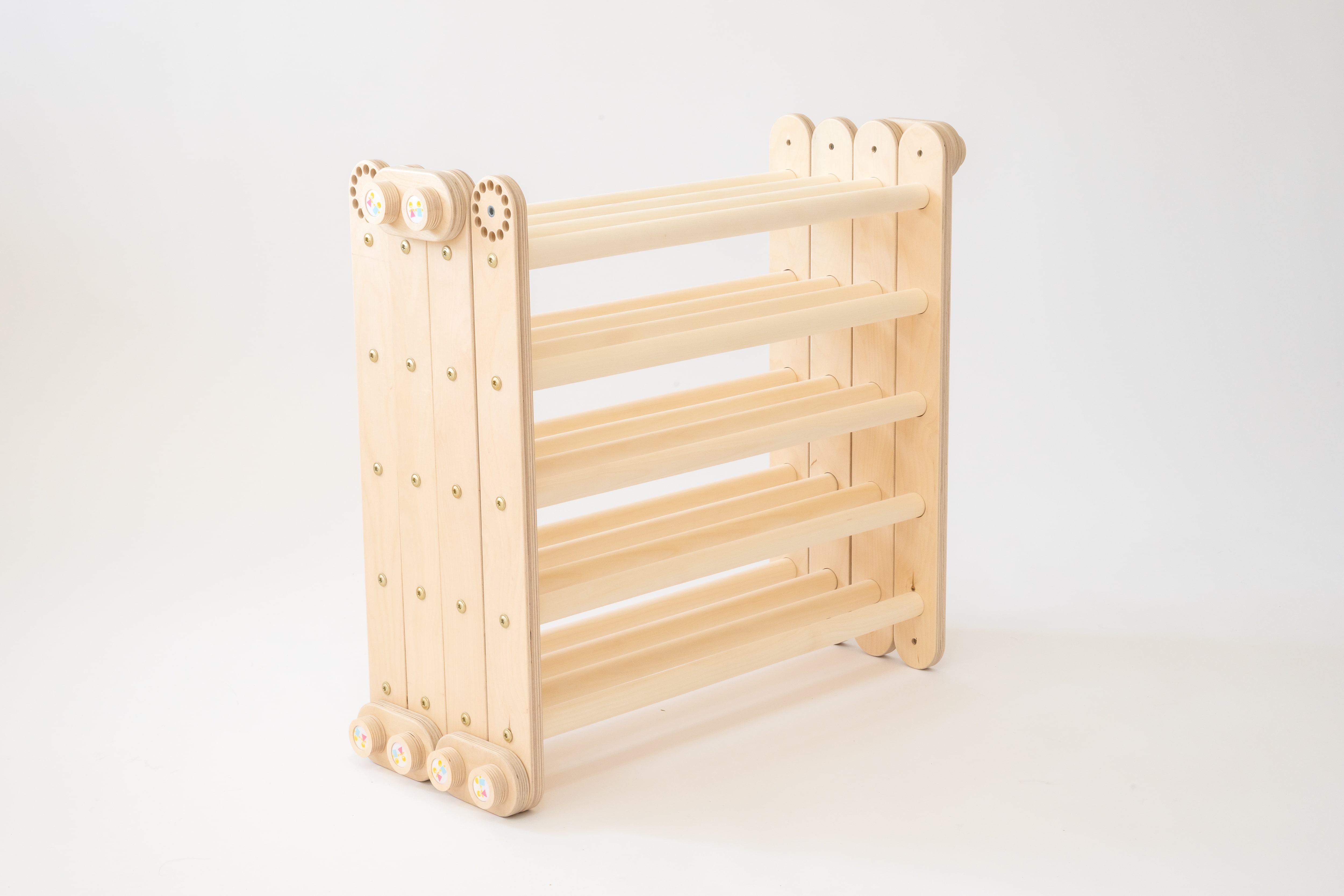
Foldable Pikler Triangle
The foldable Pikler Triangle opens and closes like a compass. It’s just as compact as the modular model but cannot change its shape (only height).
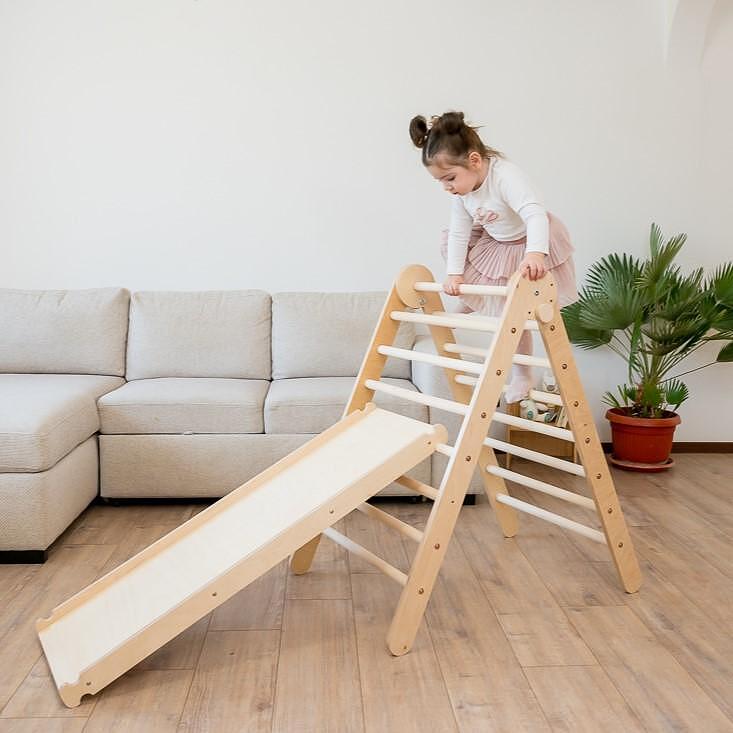
It’s perfect for smaller homes, as it can be folded flat and stored behind a sofa or under a bed when not in use.
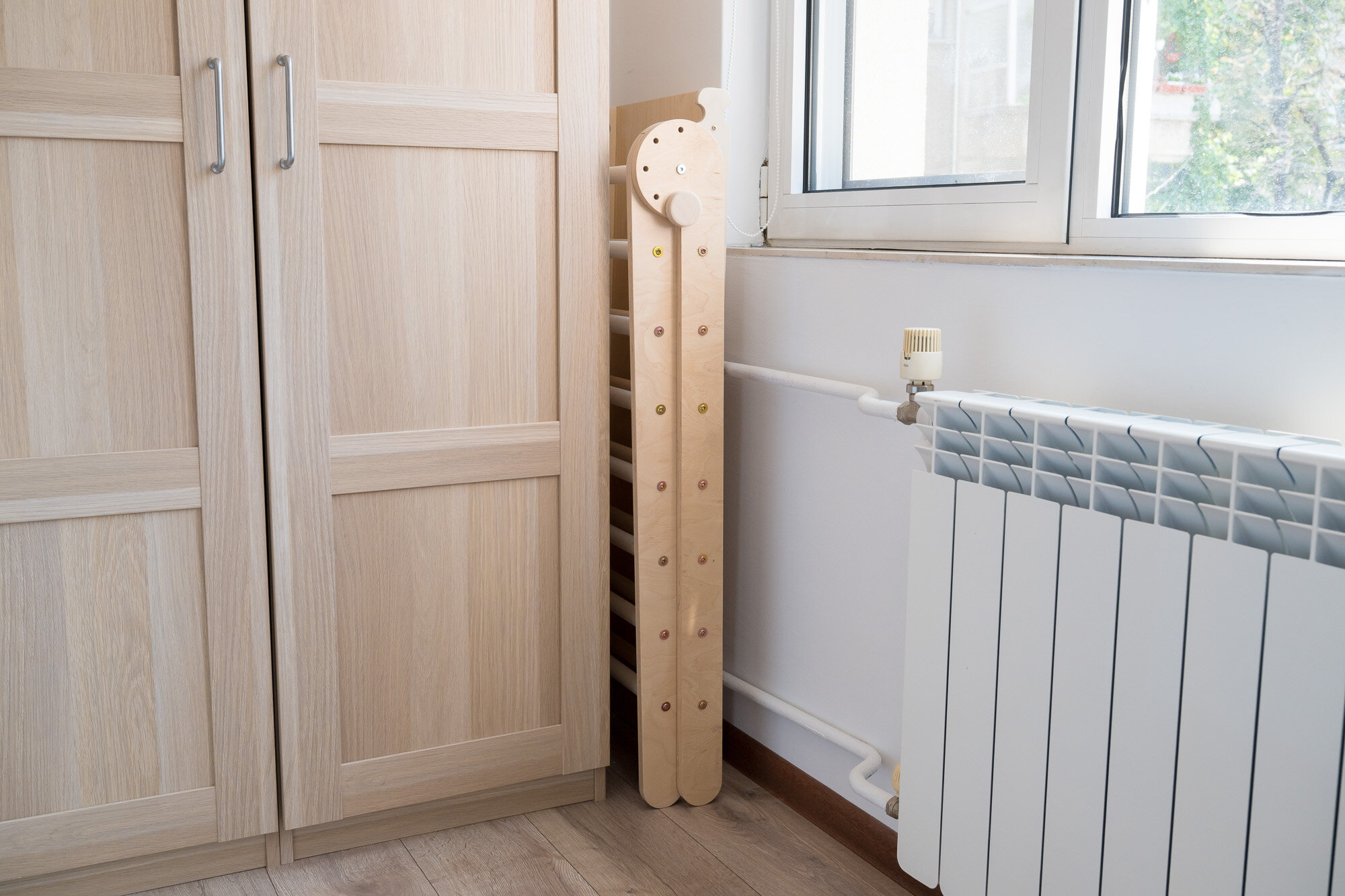
Which Pikler Triangle Should You Choose?
The answer depends on your personal needs and lifestyle.
If you value quick and easy storage, the foldable model might be the better option—it opens and closes in seconds.
If you want a more versatile structure that can change shape and grow with your child, the modular model is ideal. Although it takes a few minutes to assemble, it offers endless play variations and can keep your child engaged for years.
There isn’t a universally “better” version—there’s only the right one for your child, your space, and your routine.
Key Factors to Consider Before Buying a Pikler Triangle
Size Matters
A Pikler Triangle is a long-term investment, not a toy that will be used for just a few months. Always check the height and dimensions carefully. Some children may lose interest if the triangle is shorter than they are, so it’s best to choose one that allows for a few years of growth.
If you prefer the foldable version, remember that its size cannot be adjusted. The modular model, however, can easily be expanded with additional sections to become taller or more challenging.

Materials and Finish
Since Pikler Triangles are made of wood, the quality of the material and its finish are crucial. At Wooden Magic, every detail is crafted from premium birch and beech wood, coated with child-safe, water-based varnish and paint certified for toy production.
This makes cleaning easy and safe—even if little hands covered in food grab the bars, a quick wipe with a damp cloth is enough.

Easy Assembly
Pay attention to how easily the triangle can be assembled and disassembled. Do you need tools or screws, or can it be done by hand? The modular Pikler Triangle should be quick and intuitive to set up so you can effortlessly transform it into different shapes and keep playtime exciting.
Final Thoughts
Whether you choose a foldable Pikler Triangle or a modular Pikler Triangle, both encourage open-ended play, motor development, and independence—the true essence of Montessori learning.
Explore both versions on the Wooden Magic website and discover which design fits your home best. Which model do you think would suit your little explorer? Share your thoughts in the comments!








